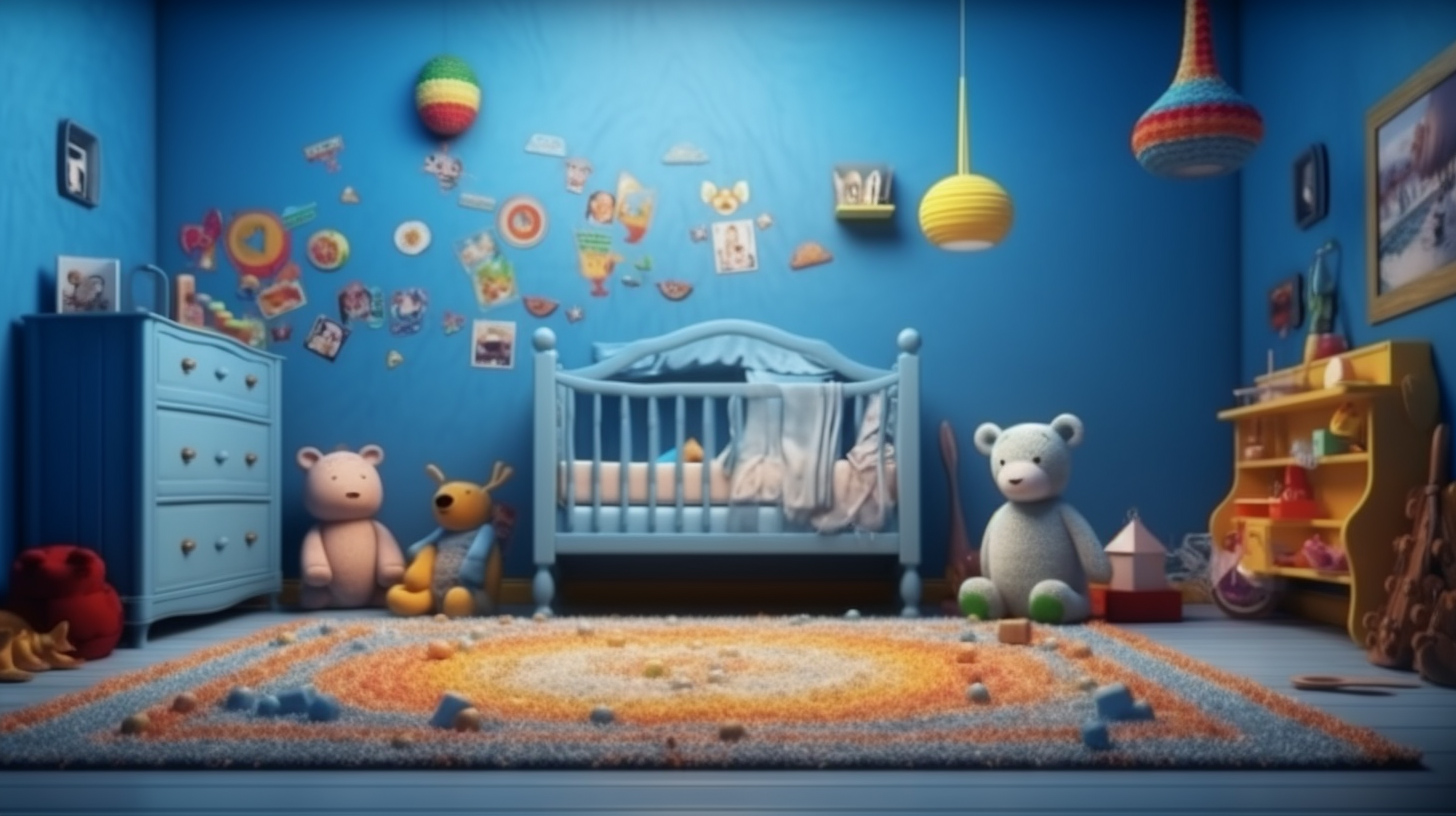Understanding the Importance of the Color of a Child’s Room
Selecting the color of a child’s room is a crucial decision for parents, as it can have a significant impact on the child’s mood, development, and well-being. The right choice of color can help to create a calm, nurturing, and inspiring environment for your little one. This article explores the benefits of colored walls and white walls for a child’s room and provides guidance on choosing the best option for your child.
The Benefits of Colored Walls in a Child’s Room
Colored walls can stimulate creativity, boost mood, and promote relaxation in a child’s room. Different colors can evoke various emotions and responses, with shades such as blue and green known for their calming effects, while warm hues like red, orange, and yellow can inspire activity and socialization. However, it’s important to strike a balance between stimulation and relaxation when choosing the color of a child’s room, to ensure a nurturing environment for growth and development.
The Advantages of White Walls in a Child’s Room
White walls provide a clean, neutral backdrop for a child’s room, allowing for greater flexibility in room design and decoration. This can be particularly useful as your child grows and their interests change, enabling you to update their room’s theme without needing to repaint the walls. White walls can also create a sense of spaciousness, making the room feel larger and more open. In addition, white is known for its calming properties, which can help promote relaxation and sleep.
Factors to Consider When Choosing the Color of a Child’s Room When deciding on the color of a child’s room, consider the following factors:
- Child’s Age: Younger children may benefit from more vibrant colors that stimulate their senses, while older children might prefer calmer, more neutral shades that promote focus and relaxation.
- Child’s Personality: Take your child’s temperament and preferences into account when selecting a color. A highly energetic child may benefit from calming colors, while a quieter child may enjoy a more vibrant, inspiring space.
- Room Size: Smaller rooms can benefit from lighter colors, which can make the space appear larger, while larger rooms can handle more intense colors without feeling overwhelming.
- Room Function: Consider how the room will be used. For example, a playroom may benefit from bright, engaging colors, while a bedroom should have a more calming, relaxing atmosphere.
- Natural Light: The amount of natural light in the room can significantly impact the appearance of colors. Lighter colors can help brighten a dim room, while darker colors can add depth and interest to a well-lit space.
Making the Right Choice for Your Child Ultimately
the color of a child’s room should be tailored to the unique needs and preferences of the child and the family. While colored walls can stimulate creativity and mood, white walls offer flexibility and a neutral canvas for room design. By carefully considering factors such as age, personality, room size, and function, you can create an environment that nurtures your child’s growth and development while remaining visually appealing and engaging.
FAQ
How do I involve my child in the process of choosing the color for their room?
Encourage your child to participate in the decision-making process by discussing their favorite colors, themes, and interests. Show them paint swatches or color samples to help them visualize the options and make an informed decision together.
Are there any colors I should avoid for my child’s room?
While there are no specific colors to avoid, it’s best to be mindful of overly bright or intense hues that may overstimulate or cause discomfort for your child. It’s also important to consider the balance between stimulation and relaxation when selecting a color.
How can I create a versatile room design that adapts to my child’s changing interests?
Opting for neutral walls, such as white or light gray, can provide a flexible canvas for your child’s evolving tastes. You can easily update room accessories, such as bedding, curtains, and wall art, to reflect their current interests without needing to repaint the walls.
Can I use multiple colors or patterns in my child’s room?
Yes, you can incorporate multiple colors or patterns to create a visually engaging space. However, be mindful of maintaining a sense of balance and harmony by not overwhelming the room with too many contrasting colors or busy patterns.


1 Comment